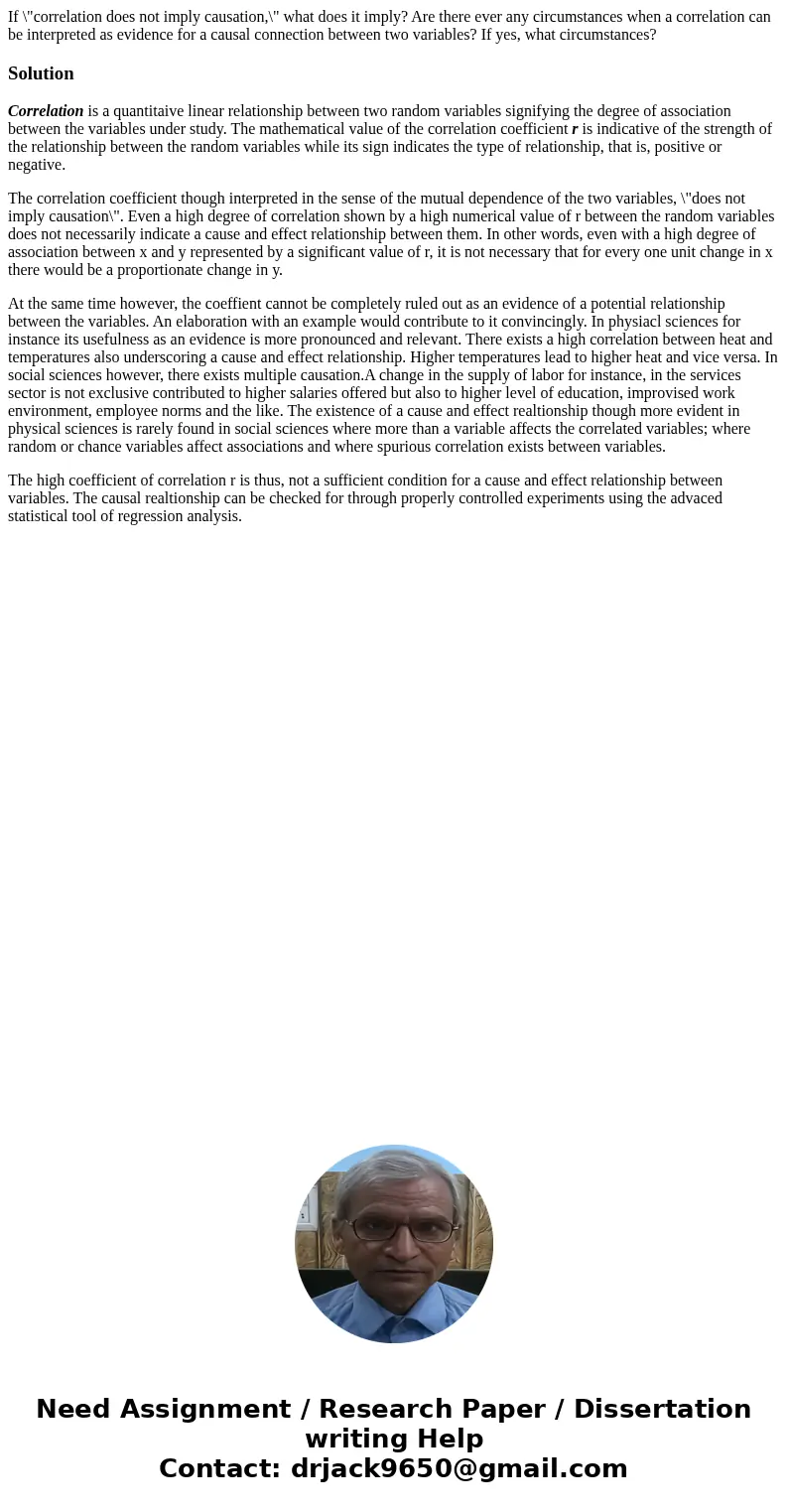If correlation does not imply causation what does it imply A
If \"correlation does not imply causation,\" what does it imply? Are there ever any circumstances when a correlation can be interpreted as evidence for a causal connection between two variables? If yes, what circumstances?
Solution
Correlation is a quantitaive linear relationship between two random variables signifying the degree of association between the variables under study. The mathematical value of the correlation coefficient r is indicative of the strength of the relationship between the random variables while its sign indicates the type of relationship, that is, positive or negative.
The correlation coefficient though interpreted in the sense of the mutual dependence of the two variables, \"does not imply causation\". Even a high degree of correlation shown by a high numerical value of r between the random variables does not necessarily indicate a cause and effect relationship between them. In other words, even with a high degree of association between x and y represented by a significant value of r, it is not necessary that for every one unit change in x there would be a proportionate change in y.
At the same time however, the coeffient cannot be completely ruled out as an evidence of a potential relationship between the variables. An elaboration with an example would contribute to it convincingly. In physiacl sciences for instance its usefulness as an evidence is more pronounced and relevant. There exists a high correlation between heat and temperatures also underscoring a cause and effect relationship. Higher temperatures lead to higher heat and vice versa. In social sciences however, there exists multiple causation.A change in the supply of labor for instance, in the services sector is not exclusive contributed to higher salaries offered but also to higher level of education, improvised work environment, employee norms and the like. The existence of a cause and effect realtionship though more evident in physical sciences is rarely found in social sciences where more than a variable affects the correlated variables; where random or chance variables affect associations and where spurious correlation exists between variables.
The high coefficient of correlation r is thus, not a sufficient condition for a cause and effect relationship between variables. The causal realtionship can be checked for through properly controlled experiments using the advaced statistical tool of regression analysis.

 Homework Sourse
Homework Sourse